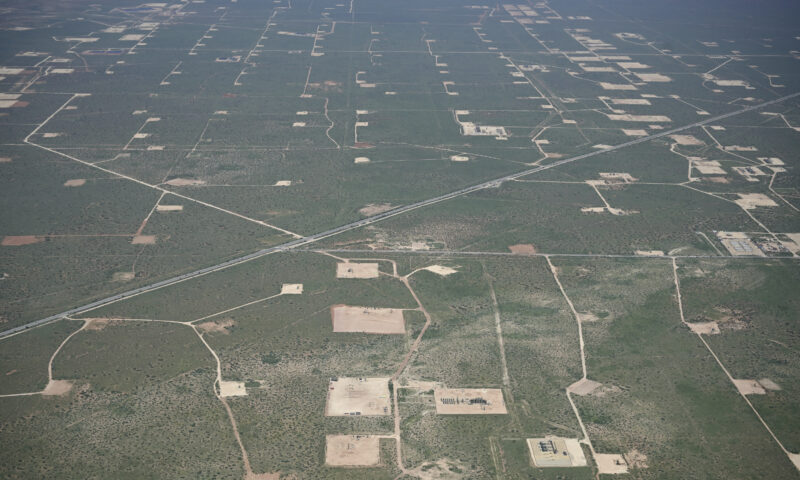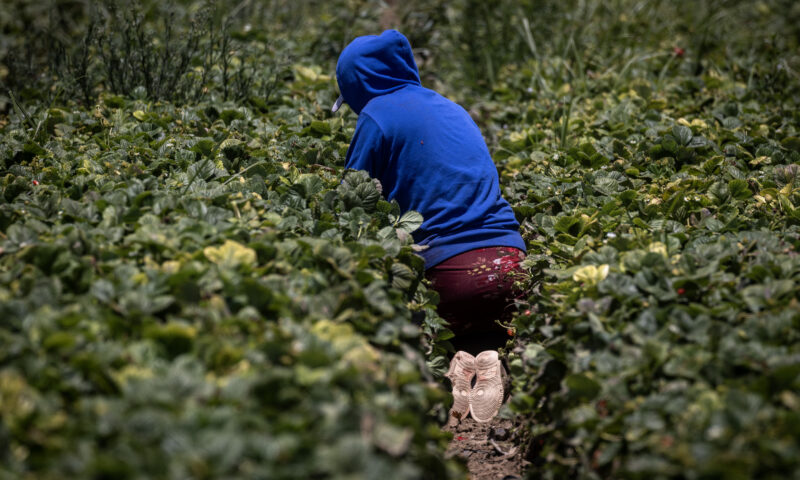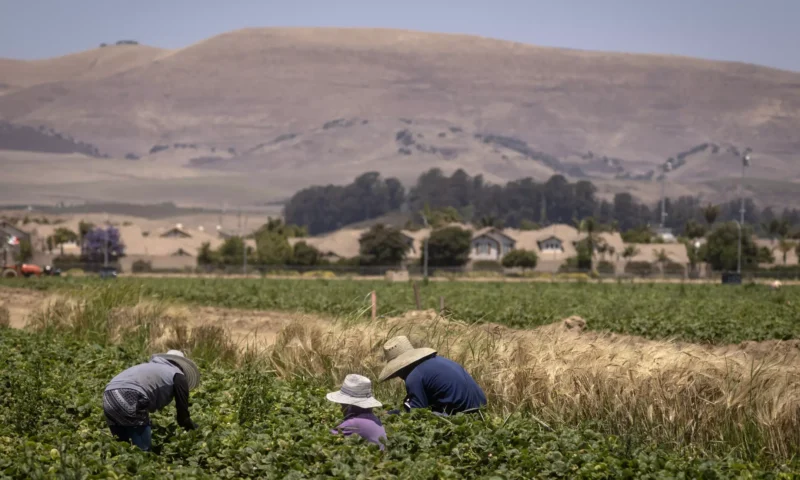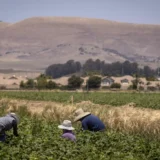Labor & Economy
How a Labor Law Evened the Balance of Power in California’s Fields
From the start a labor rule allowing union access to farmworkers in the field helped level the relationship between workers and growers.

In the winter of 1976, a year after the Agricultural Labor Relations Act took effect, lettuce cutters at George Arakelian Farms Inc. began organizing a union. The men lived in Mexicali, Mexico, just south of California’s Imperial Valley. Every day they left home at 2 a.m. and walked to the border. After crossing it, the company labor contractor put them into cars. As each clunker was filled, it took off for the Palo Verde Valley, a two-hour drive across the desert.
Read: The Legal Attack on California’s Access Rule
Union organizers also met the workers at the border and followed the cars. When they all arrived at the fields, however, the crews couldn’t immediately start work. In the winter, water freezes inside the lettuce. If a cutter grabs a head to harvest it, the ice cuts into the leaves and they wilt. Everyone has to wait for the ice to melt, when work can start.
Next to the fields, workers lit fires in 55-gallon drums. In those moments when they stood warming their hands and talking with the organizers, the union at Arakelian Farms began to take form. The laborers asked about the benefit plans, their rights under the new labor law and when they might be able to vote the union in. They set up a ranch committee to make decisions and convince the unconvinced.
When the ice finally melted, they began to cut, almost running down the rows with their knives. Packers followed, tossing boxes of lettuce onto trucks. No one took lunch. When the company filled its daily order, workers jumped into their cars and drove back to the border. They walked home with just with enough time to eat, say hi to their kids, catch a few hours’ sleep, and then wake up again and leave at 2.
Organizing their union this way was possible because of the access regulation, formulated by the Agricultural Labor Relations Board. The regulation allowed the organizers to come onto Arakelian’s property in the morning before work to talk with the lettuce cutters. After a few weeks of field meetings, workers and organizers filed a petition for an election, which the union won 139-12.
Like many growers, however, Arakelian refused to negotiate a contract. It took nearly 10 years before the California Supreme Court found Arakelian had violated its obligation to bargain with its workers. Other parts of the law had to be changed to solve that problem, and George Arakelian Farms is no longer in business. The workers have moved on. But from the beginning, the access rule was the tool they, and others like them, used to help even the balance of power with the growers.

-

 Latest NewsDecember 8, 2025
Latest NewsDecember 8, 2025This L.A. Museum Is Standing Up to Trump’s Whitewashing, Vowing to ‘Scrub Nothing’
-

 Striking BackDecember 4, 2025
Striking BackDecember 4, 2025Home Care Workers Are Losing Minimum Wage Protections — and Fighting Back
-

 The SlickDecember 2, 2025
The SlickDecember 2, 2025Utility Asks New Mexico for ‘Zero Emission’ Status for Gas-Fired Power Plant
-

 Latest NewsDecember 1, 2025
Latest NewsDecember 1, 2025Accountable to No One: What 1990s L.A. Teaches Us About the Trump Resistance
-

 Dirty MoneyDecember 3, 2025
Dirty MoneyDecember 3, 2025Trump’s Anti-Climate Policies Are Driving Up Insurance Costs for Homeowners, Say Experts
-

 Child FarmworkersDecember 5, 2025
Child FarmworkersDecember 5, 2025To Protect Underage Farmworkers, California Expands Oversight of Field Conditions
-

 Column - State of InequalityDecember 4, 2025
Column - State of InequalityDecember 4, 2025Can California Claw Back Some Medi-Cal Care?
-

 Latest NewsDecember 10, 2025
Latest NewsDecember 10, 2025Capital & Main, L.A. Times Win Sidney Award for Reporting on Child Farmworkers

